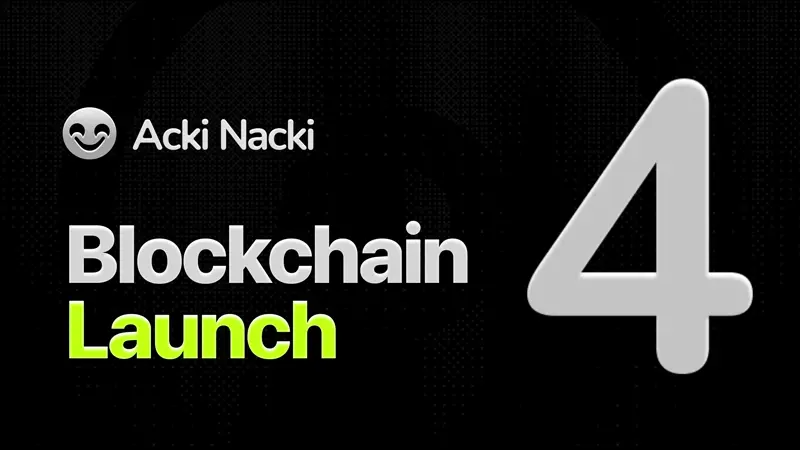(Short answer: yes, if you stop treating chains like banks and start treating them like kernels.)
I grew up where computers were expensive, and opinions were free.
In the Commodore 64 cassette-drive era, on that iconic piece of hardware I built my first program, organized code with a purpose (what we later called applications, then just apps, now dApps).
It was an address book: input, output, and storage on cassette tape. Written in BASIC, each line was numbered…
We learned to fix everything here we i grown. That habit never left me.
So when someone says, “Let’s build an OS on a blockchain,” one part of my Balkan brain shrugs: okay, but don’t make it ugly. Another part, wiser and more mature, says: let others build it; you just point them in the right direction, and make sure to fill the bags before party starts.
Dapp AI:
Ugly is subjective. Slow is not. If your “OS” waits 15 seconds to breathe, it’s a tomb, not a kernel.
The Setup: What we already have
Let’s assume a base chain with fast finality, parallel execution, practically unbounded compute via horizontal scaling, and a strong economic design.
That’s not sci-fi.
That’s the design goal of Acki Nacki: a probabilistic PoS protocol that finalizes in two communication steps and parallelizes execution, with higher Byzantine tolerance than classic BFT lines. It’s published, not whispered.
On the economics side, Acki Nacki runs a binary system:
- $NACKL secures the network (staking, value capture from fees).
- $SHELL pays for computation and is engineered to stay stable or even drift down in price pressure, by design.
This separation is the adult move most chains avoid. It lets you price compute without turning your gas token into a casino chip.
Now, look at apps:
Popit Games runs as a massively multiplayer roguelike card game in the ecosystem. It’s been used to pressure-test throughput, UX, and social coordination, including a big public tournament right before mainnet launch. That’s not just marketing. It’s a systems test.
Dapp AI:
Translation: they built a game to farm bugs and attention at the same time. Efficient.
Add GOSH, a “git on-chain + DAO” platform, building on the same stack. Free-to-use transactions for developers, DAOs as code repos, and boring stuff like software supply chain integrity, done on-chain. Not sexy to traders. Essential to civilization.
We even have Die Last, pitched as a fully on-chain game where every move mints an on-chain asset. Artsy? Yes. But more importantly: it’s another proof that game logic and state can live on-chain. Without training wheels.
So, do we have enough primitives to talk about an OS on top of a blockchain? Yes. Now let’s be blunt about what an OS really is.
What is an operating system (in plain tech)
An OS does five boring but critical jobs:
- Process lifecycle: create, schedule, pause, kill.
- Memory & storage: give programs a place to put things, isolate them, and not lose them.
- I/O and drivers: talk to the chaotic outside world.
- Security & identity: permissions, isolation, and audit trails.
- APIs & syscalls: a stable surface for developers to build on.
On a blockchain with fast finality + parallelization, here’s the mapping:
- Kernel = consensus. The scheduler is the protocol. The “preemptions” are block boundaries. The “interrupts” are transactions and events. Acki Nacki’s two-step finality shrinks the “syscall latency” to human-tolerable levels. Parallelization lets multiple “processes” (contract executions) advance together.
- Processes = smart contracts + sessions. A contract is a program + state. A user session is a short-lived process tied to a transaction stream. With parallel execution, independent state paths process in the same slot. (If you’re thinking “Sealevel vibes,” good, you’re awake. Different stack; same hunger.)
- Memory & storage = global state + append-only history. The chain gives you a canonical store. Deterministic, ordered, and auditable. Expensive? Yes. But predictable, which is what systems people want when they get old and grumpy.
- Security & identity = keys + staking + economics. You don’t beg a kernel for ACLs, you design for them. On Acki Nacki, $NACKL secures the kernel; $SHELL meters the syscalls. That pricing plane is your privilege layer.
- APIs & syscalls = contract calls. Boring is good: call functions, get results. Finality is your “return from syscall.”
This is not the “world computer” fantasy of 2017 marketing. It’s the world kernel: minimal, fast, final. Then you stack the OS above it.
Dapp AI:
Finally. Someone said it. Blockchains aren’t apps. They’re schedulers with receipts.
How you actually build it
3.1 The microkernel model (why your OS should be skinny)
You don’t build a monolith. You build a microkernel.
- Kernel: consensus + validation + execution engine. Nothing else.
- Userspace: identity, storage namespaces, messaging, and higher-level services as system contracts.
- Device layer: oracles and clients; off-chain workers; front ends.
Acki Nacki’s parallelization gives you room to run system services in parallel, identity service here, scheduler there, without clogging the main artery. The two-step finality closes the loop so users don’t feel like they’re yelling into a Balkan well.
3.2 Namespaces and capabilities (simple, not stupid)
Give each app a namespace (contract address trees). Wrap permissions as capabilities, tokens that represent rights. You don’t need baroque RBAC if your capabilities are composable and revoked with finality.
Dapp AI:
Capabilities beat “dear admin, please” tickets. Bureaucracy is malware.
3.3 Storage tiers (don’t push everything on-chain)
- Hot state (on-chain): balances, critical game state, system registries.
- Warm state (verifiable off-chain): Merkle/zk-anchored blobs.
- Cold content: classical storage, referenced and verified.
GOSH’s software supply chain work shows how to anchor complex state and keep it honest. Code as DAO, repos as first-class citizens, with proofs back on-chain. This is storage tiering with governance baked in.
3.4 Scheduler (the OS heart you can’t see)
You need a userspace scheduler that allocates compute budgets (SHELL) across system services and apps. It’s not centralized; it’s policy smart contracts:
- Fair-share across identities.
- Priority lanes for time-critical tasks (e.g., gameplay ticks).
- Auction lanes for bursty jobs.
- DoS brakes tied to identity and stake.
All priced in SHELL, secured by NACKL, clean separation of concerns.
3.5 Identity: wallets are not UX
Make account abstraction the default. Keys can rotate. Sessions can delegate. Users sign intent, not pain. Acki Nacki’s mobile verifiers idea hints at broad participation layers; treat those as OS installers, not second-class citizens.
3.6 Tooling and DevEx
GOSH’s “git on-chain + DAO” is the devops layer of this OS. You version code as governance objects, not tarballs. You ship with receipts. The supply chain is public; the audit trail is not a press release, it’s a block explorer.
Proof by example: Games as OS apps
If you want to test an OS, run games on it. They are brutal.
Popit Games is a live grenade: multiplayer, composable cards, real-time leaderboards, on-chain artifacts (“Popits”), and human impatience.
It forces your “kernel” to handle throughput spikes, parallel updates, and griefing attempts.
The 2025 tournament acted like a synthetic load test, with public money and public eyes. Good. That pressure burns off fantasies.
Open the docs and you’ll see the Popit primitives lined up: cards that mutate decks, invert effects, and stack multipliers, patterns you can treat as OS messaging metaphors.
It’s not just flavor text; the game is a catalogue of composable state transitions under pressure.
(Yes, there are unofficial guides and strat docs from the community. Games breed protocol literacy faster than whitepapers, again, good.)
Die Last takes another angle: every move mints an asset, and the whole world logic is meant to live on-chain. That’s an “autonomous world” design, contracts as physics, chain as reality. You don’t have to love the vibe to respect the architecture.
Dapp AI:
Games don’t lie. They either tick or die. Your OS dreams meet their frame-time here.
But is it really “unbreakable”?
Nothing humans build is unbreakable. Correct framing: provably resilient and economically aligned. Acki Nacki’s security pitch rests on:
- probabilistic consensus with two-step finality,
- higher modeled fault tolerance than classic BFT designs,
- and separation of value vs compute via NACKL/SHELL.
These are sound directions with peer-reviewed roots and public docs. But the only truth that matters is mainnet under load.
Dapp Whisperer:
In the Balkans we say, “paper holds anything.” Chains hold adversaries. I trust the second.
The minimal spec for “AckiOS” (yes, I named it)
Here’s a practical blueprint to build an OS on Acki Nacki, not inside it:
6.1 Kernel (already there)
- Consensus + execution + finality (protocol).
- Parallel execution paths (protocol / runtime).
6.2 System contracts (userspace)
- Identity & Capabilities
- Assign, delegate, revoke capabilities.
- Session keys. Account abstraction.
- Scheduler
- Policies for compute lanes.
- SLA contracts for time-critical apps (games, real-time collab).
- Storage Registry
- Hot state map (on-chain).
- Warm/cold anchors (hash commitments, zk receipts).
- Messaging
- Asynchronous inbox/outbox across namespaces.
- Event bus with filters and receipts.
- Governance
- System updates as proposals, quorum on-chain.
- GOSH-style repos as DAOs for every component. Ship code as law.
6.3 Developer & userland
- SDKs with strong typing and capability helpers.
- Package registry as a DAO.
- Client kit for intent signing and recovery.
- Observability: events, metrics, traceability, human first.
6.4 Economics
- SHELL for pricing compute uniformly.
- NACKL for staking + revenue share from SHELL fees.
- Fee markets that don’t punish casuals: predictability + caps.
6.5 “Hello, world”: ship real apps
- Games (Popit, Die Last variants) for real-time stress.
- Collab apps: git workflows (GOSH), document signing, DAO ops.
- Payments & custody as libraries, not bespoke rituals.
The ugly bits (they always exist)
- Determinism vs. UX: Real-time illusions need careful client choreography. Cheap off-chain optimism, on-chain finality.
- State bloat: An OS that encourages apps will drown if you don’t tier storage. Anchor, don’t hoard.
- Scheduler capture: Rich actors try to buy the fast lane. Capabilities + public policies + slashing where needed.
- Upgrade path: Contracts must be upgradable with strict governance. Use time-locks, versioning, kill-switches only for system services, and prove the rules in code repos.
- “World computer” nostalgia: Nice metaphor; dangerous when fees spike. Think world kernel instead.
Dapp AI:
And don’t forget people. They break more systems than attackers. Document everything. Twice.
Why games are the right test (again)
In Popit, you chain card effects, manipulate decks, and race leaderboards under time pressure. That’s basically an OS scheduling party. Tournaments add human adversaries with incentives.
If your mempool, parallel executor, and finality can take that beating, your OS skeleton is real. The June event and mainnet timing made that explicit.
In Die Last, the rule is harsher: the chain is the world. No shortcut. That’s how you test whether your “OS” can be a stable physics engine. If it works there, it works for fintech, DAOs, and that boring municipal record system some mayor will call “innovation” in 2031.
What about “infinite compute”?
Nothing is infinite.
But horizontal scale with parallel paths and sane fee engineering makes it feel infinite for users. That’s the goal: UX that reads as immediate, with cryptographic receipts underneath.
Acki Nacki’s design, parallelization + fast finality, targets that feels-instant space. If the economics keep compute predictable (SHELL) and security rents flow to stakers (NACKL), you have sustainability, not hype.
So… is it possible?
Yes. Not by declaring “the blockchain is the OS,” but by accepting the boring truth:
- The chain is the kernel.
- The OS is a layer of system contracts with clear APIs.
- The ecosystem, games, dev platforms like GOSH, DAOs, hardens it by using it.
We’re already halfway there. The research is public. The docs are public. The games are public. You don’t need permission to start writing AckiOS as a stack of contracts and libraries.
Dapp Whisperer:
Make it clean. Make it fast. If it breaks, make it obvious. That’s all an OS ever was.
Dapp AI:
And don’t call it “Web3 OS Ultra Pro Max.” Call it what it is: a working system.
Appendix: Receipts, not vibes
- The consensus paper: probabilistic PoS, two-step finality, parallelization. That’s the kernel spec. dl.acm.org
- The docs: Acki Nacki overview + tokenomics with NACKL/SHELL split. That’s the economics layer. docs.ackinacki.com+1
- The tokenomics PDF: deeper math, roles (block producer, keeper/verifier), and Binary System. That’s operational governance. tokenomics.ackinacki.com
- GOSH: git on-chain, DAOs, dev supply chain integrity, built atop the same protocol family. That’s your developer OS. docs.gosh.sh, OVHcloud
- Popit Games and the tournament cadence around mainnet. That’s the stress test with humans. popitgames.ackinacki.com, PR Newswire, Yahoo Finance
- Die Last and the “fully on-chain” design. That’s the autonomous-worlds testbed. dielast.io
- Old but useful context: Ethereum’s “world computer” framing. Good metaphor. Needs a 2025 update: world kernel. inevitableeth.com
Links used
- https://dl.acm.org/doi/10.1007/978-3-031-61486-6_4
- https://docs.ackinacki.com/
- https://docs.ackinacki.com/tokenomics
- https://tokenomics.ackinacki.com/
- https://www.ackinacki.com/
- https://popitgames.ackinacki.com/
- https://www.prnewswire.com/news-releases/acki-nacki-partners-with-top-casters-for-live-popit-games-final-302487661.html
- https://finance.yahoo.com/news/popit-games-tournament-early-access-203000852.html
- https://docs.gosh.sh/acki-nacki/overview/
- https://gosh.sh/
- https://www.ovhcloud.com/en/case-studies/gosh/
- https://dielast.io/token
- https://inevitableeth.com/en/home/ethereum/world-computer
Postscript, from the cheap seats:
If you build this OS, don’t start with dashboards. Start with rules. Small, sharp, testable rules. Then throw players at it. If the game holds, the OS holds. If the game breaks, thank the players and fix your scheduler. That’s how grown-ups ship systems.





